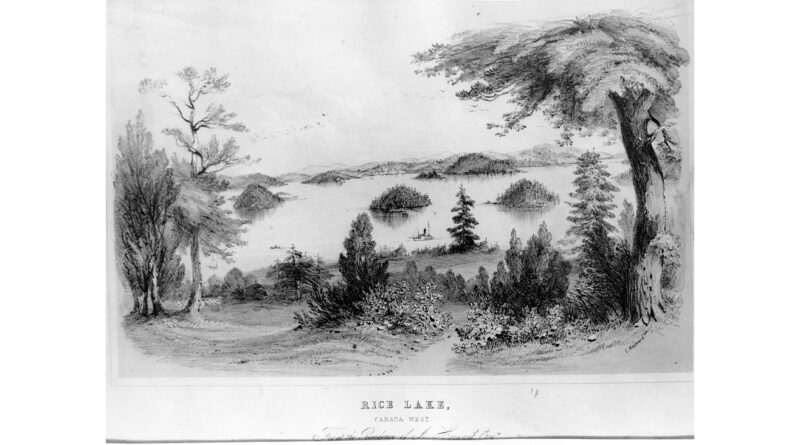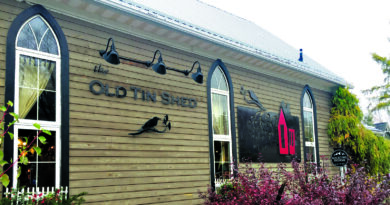Steamboats Arrive in the Kawarthas
American engineer Robert Fulton (1765-1815) is credited with creating the first commercially-viable steamboat in 1807. Early steamboats, using either side- or rear-mounted paddlewheels powered by steam engines, were an improvement on sailing vessels because they were not wind-dependent and could go against currents and tides when necessary.
In 1825, steamboats were an important component of Peter Robinson’s Irish emigration program: the City of Cork shuttled his emigrants from the wharves of Cohb and Cork to their ships; steamers carried the emigrants and their belongings upriver from Quebec City to Montreal; other steamboats transported them from Kingston to Cobourg, the jumping-off point for their trek to Peterborough. One of these early Lake Ontario steamers, the Frontenac (built in 1815), was the first on the Great Lakes; she ran weekly between Kingston and York (now Toronto), stopping at communities along her route.
In June 1832, Cobourg businessman James Gray Bethune launched the first steamer onto Rice Lake at Sully (now Harwood). She was Pem-e-dash-cou-tay-ang (“lake of the burning plains”), the Ojibwe name for Rice Lake. Pemedash (her nickname) was a side-wheeler with a “feeble” 18-horsepower engine, which meant that she needed a full day to sail the 25-mile round trip from Sully to Peterborough. The steamer could carry a good amount of cargo and several passengers – although two passengers were underwhelmed by the vessel: Anne Langton described her as “the most uncouth steam packet we had ever seen” and Catharine Parr Traill called her “this apology for a steam-boat”. Inadequate as Pemedash may have been, she was a considerable improvement on the canoes, skiffs, and scows that plied Rice Lake and the Otonabee River at that time. In 1833, Bethune built the Sturgeon for Lake Chemong, then added the Northumberland (later sold and renamed Sir Francis Bond Head) to his Rice Lake “fleet” in 1835.
The Peterborough area’s expanding population and importance brought more steamers into service around it in the 1840s and 1850s – with mixed success. From this shaky beginning, however, would grow a significant steamboat network that connected the Kawartha lakes to each other and to the outside world.
By: Don Willcock on behalf of The Peterborough Museum & Archives
300 Hunter St E, Peterborough, 705-743-5180
www.peterboroughmuseumandarchives.ca




